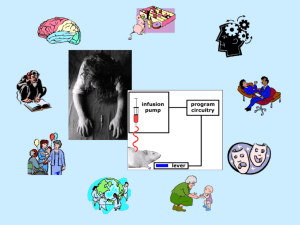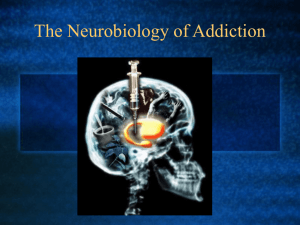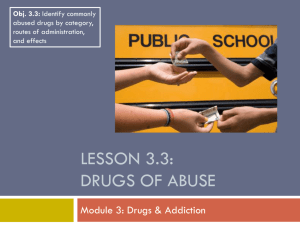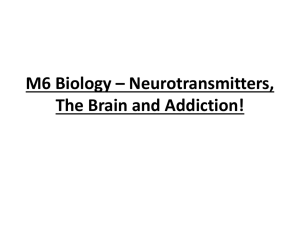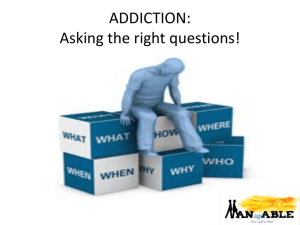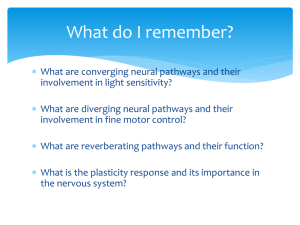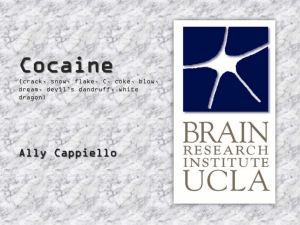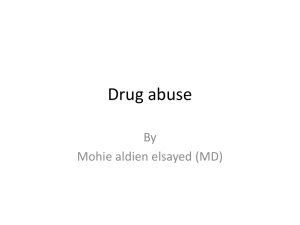why study addiction in ap psychology?
advertisement
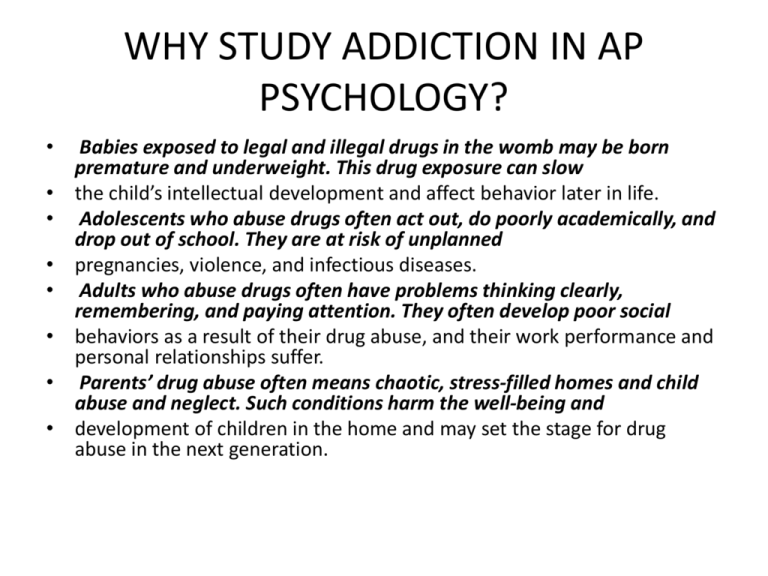
WHY STUDY ADDICTION IN AP PSYCHOLOGY? • • • • • • • • Babies exposed to legal and illegal drugs in the womb may be born premature and underweight. This drug exposure can slow the child’s intellectual development and affect behavior later in life. Adolescents who abuse drugs often act out, do poorly academically, and drop out of school. They are at risk of unplanned pregnancies, violence, and infectious diseases. Adults who abuse drugs often have problems thinking clearly, remembering, and paying attention. They often develop poor social behaviors as a result of their drug abuse, and their work performance and personal relationships suffer. Parents’ drug abuse often means chaotic, stress-filled homes and child abuse and neglect. Such conditions harm the well-being and development of children in the home and may set the stage for drug abuse in the next generation. Costs of Addiction • Abuse and addiction to alcohol, nicotine, and illegal substances cost Americans upwards of half a trillion dollars a year, considering • Their combined medical, economic, criminal, and social impact. Every year, abuse of illicit drugs and alcohol contributes to the • Death of more than 100,000 Americans, while tobacco is linked to an estimated 440,000 deaths per year. What is drug addiction? • Addiction is defined as a chronic, relapsing brain disease that is characterized by compulsive drug seeking and use, despite harmful consequences. • It is considered a brain disease because drugs change the brain—they change its structure and how it works. These brain changes can be long lasting, and can lead to the harmful behaviors seen in people who abuse drugs. Why do people take drugs? • 1. To feel good. Most abused drugs produce intense feelings of pleasure. This initial sensation of euphoria is followed by other effects, which • 2. To feel better. Some people who suffer from social anxiety, stress-related disorders, and • 3. To do better. The increasing pressure that some individuals feel to chemically enhance or • 4. Curiosity and “because others are doing it.” Introducing the Human Brain • Introducing the Human Brain • The human brain is the most complex organ in the body. This three-pound mass of gray and white matter sits at the center of all • Human activity—you need it to drive a car, to enjoy a meal, to breathe, to create an artistic masterpiece, and to enjoy everyday activities. In brief, the brain regulates your basic body functions; enables you to interpret and respond to everything you experience; and shapes your thoughts, emotions, and behavior. How does the brain communicate? • • • • • • • • • • • • • • • • • Neuron to Neuron Each nerve cell in the brain sends and receives messages in the form of electrical impulses. Once a cell receives and processes a message, it sends it on to other neurons. Neurotransmitters—The Brain’s Chemical Messengers The messages are carried between neurons by chemicals called neurotransmitters. (They transmit messages between neurons.) Receptors—The Brain’s Chemical Receivers The neurotransmitter attaches to a specialized site on the receiving cell called a receptor. A neurotransmitter and its receptor operate like a “key and lock,” an exquisitely specific mechanism that ensures that each receptor will forward the appropriate message only after interacting with the right kind of neurotransmitter. Transporters—The Brain’s Chemical Recyclers Located on the cell that releases the neurotransmitter, transporters recycle these neurotransmitters (i.e., bring them back into the cell that released them), thereby shutting off the signal between neurons. CYCLE OF ADDICTION • • • • • • • • • • • • • • • • What happens to your brain if you keep taking drugs? Just as we turn down the volume on a radio that is too loud, the brain adjusts to the overwhelming surges in dopamine (and other neurotransmitters) by producing less dopamine or by reducing the number of receptors that can receive signals. As a result, dopamine’s impact on the reward circuit of a drug abuser’s brain can become abnormally low, and the ability to experience any pleasure is reduced. This is why the abuser eventually feels flat, lifeless, and depressed, and is unable to enjoy things that previously brought them pleasure. Now, they need to take drugs just to try and bring their dopamine function back up to normal. And, they must take larger amounts of the drug than they first did to create the dopamine high—an effect known as tolerance. Dopamine Reward Pathways • Reward & emotional behavior • Central role in addiction • • Targeted by stimulants such as cocaine & amphetamine • Hijack natural reward pathways • Increase alertness, libido, cognitive performance, & mood • Addictive, harmful to brain & body • ADD medication (e.g. Adderall); Less harmful amphetamine Serotonin • Serotonin • Mood regulation, appetite, sleep, and dreaming, memory & learning • Drugs affecting serotonin system: Antidepressants (SSRIs) Hallucinogens MDMA (ecstasy) Releases large amounts ofserotonin Side effects include sense of empathy , induced sense of intimacy, reduced fear, perceptual and distortions But also: Rebound depression, anxiety, and fatigue

